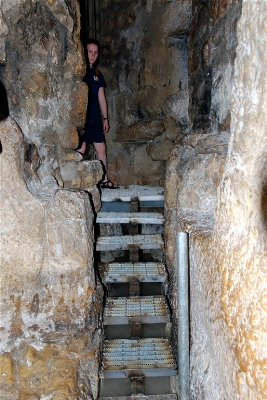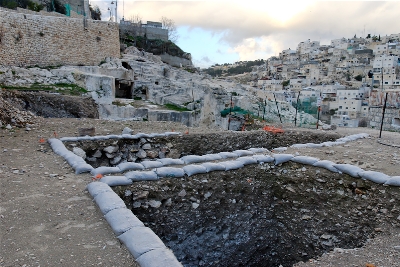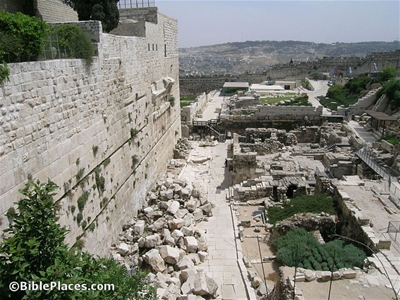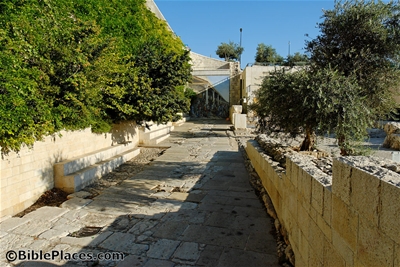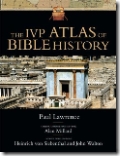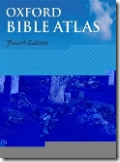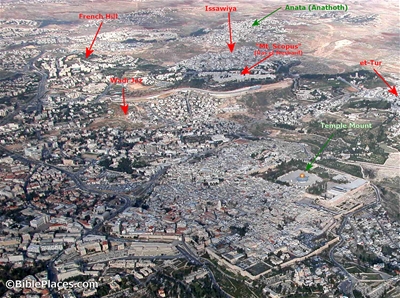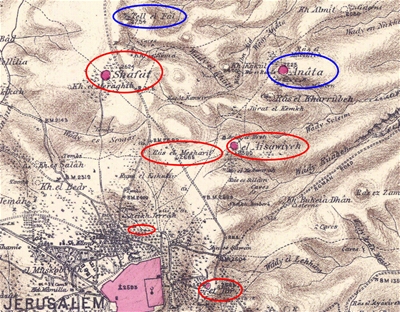Last month, for the first time in 100 years, Hezekiah’s Tunnel was emptied of water so that repairs could be made. According to the City of David’s press release, the tunnel would be closed “for two weeks for ongoing maintenance work and restoration of the plaster on the floor of the tunnel.” Work finished earlier this week and the waters of the Gihon Spring are once again flowing through the ancient tunnel. What the press release didn’t say was that significant alterations were made to the tunnel. At the entrance of the tunnel, a large metal platform was installed in the cave where the Gihon Spring emerges. It may ease passage for old tourists, but it destroys the original look and feel.
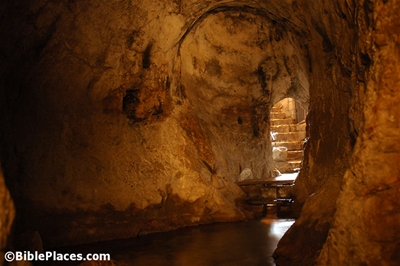
The Gihon spring cave, as it was a year ago. Today imagine a large metal platform with guard rails filling the photo.
At the end of the tunnel, metal steps were installed to make exit from the tunnel easier for people who have trouble walking. Is such modernization necessary? Do we really want 70-year-old grandmas trying to traverse the tunnel? The past is getting further away at an alarming pace. Fortunately, they have not yet installed a state-of-the-art lighting and sound system.
Forgive us for yearning for the days of Edward Robinson, the first Westerner to go through the tunnel in 1838.
Repairing one afternoon (April 27th) to Siloam, in order to measure the reservoir, we found no person there; and the water in the basin being low, we embraced this opportunity for accomplishing our purpose. Stripping off our shoes and stockings and rolling our garments above our knees, we entered with our lights and measuring tapes in our hands. The water was low, nowhere over a foot in depth, and for the most part not more than three or four inches, with hardly a perceptible current….At the end of 800 feet, it became so low, that we could advance no further without crawling on all fours, and bringing our bodies close to the water. As we were not prepared for this, we thought it better to retreat, and try again another day from the other end. Tracing therefore upon the roof with the smoke of our candles the initials of our names and the figures 800, as a mark of our progress on this side, we returned with our clothes somewhat wet and soiled” (Biblical Researches 1: 501-2).
Up the hill a bit, there are new excavations underway not far from the so-called “tomb of David.”
And, if you missed it, archaeologists last week announced the discovery of a main 1st-century street which runs from the Pool of Siloam to the Temple Mount. The Hebrew version of the article includes a photo and a diagram. The archaeologist told me a few days ago that excavation of this street is just beginning and is especially tricky because it’s all being done in a tunnel underground (reminiscent of Charles Warren’s excavations). The street is a continuation of the one visible underneath Robinson’s Arch.
